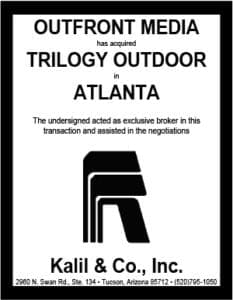
The regular session of the Texas Legislature, which meets for five months every two years, finally concluded at the end of May. However, several important measures, like property tax cuts, were not completed by the Legislature, so the Governor has called the law makers back for a special session. And, of course, the Texas Senate is gearing up for the impeachment trial of Attorney General Ken Paxton, which is expected to commence in August. Thus, there’s still plenty of fireworks to come in the Lone Star State this summer.
In the meantime, the Legislature did pass a couple of impactful and controversial bills that, while probably not originally intended to directly affect the billboard industry, are very likely to do so. The first bill that could have an impact on the industry is HB 2127, which could invalidate certain local sign regulations that conflict with billboard owners’ rights afforded under the Texas Highway Beautification Act. The bill generally provides for the preemption of certain state statutes over inconsistent local ordinances, and the waiver of sovereign of immunity otherwise enjoyed by municipalities that enact and enforce such offending ordinances. Importantly, it includes a catch-all provision in Section 11 adding a new Section 51.002 as an amendment to Chapter 51 of the Local Government Code, which states, “Notwithstanding Section 51.001, the governing body of a municipality may adopt, enforce, or maintain an ordinance or rule only if the ordinance or rule is consistent with the laws of this state.”
We at Rothfelder & Falick have been discussing internally applications of the new statute in ways where our billboard company clients might address stringent local sign regulations. For example, we’ve considered using the new statute to avoid excessive and therefore “inconsistent” local height restrictions. Specifically, Section 391.038 of the Texas Transportation Code provides that commercial signs may be as tall as 60 feet; however, many local sign regulations restrict sign height to 42.5 feet or something lower than that permitted by State law, thereby being inconsistent and unenforceable.
In fact, one can easily imagine the situation where the Texas law, specifically Chapter 391 of the Texas Transportation Code and the administrative regulations promulgated thereunder, permitted the erection of a new sign, or the relocation of a sign displaced by highway improvements, but the local city ordinance prohibited such new or relocated billboards. It could be persuasively argued under this new bill that such local prohibitions would be inconsistent and therefore preempted by the State regulations permitting such a sign at a conforming location (i.e., in a commercial or industrial area, and compliant with the spacing, location, size, height, and lighting requirements under 43 Texas Administrative Code Sections 21, et seq.). It follows, therefore, one could argue entitlement to erect such a compliant sign under State law, and as such, any efforts by the city to limit doing so is inconsistent with Texas regulations and invalid.
The second important bill is SB 2038. Generally speaking, it allows anyone owning property in most municipal extraterritorial jurisdictions (there are exceptions for ETJs located within close proximity to military bases or ETJs of cities with large populations) to either bring a petition or call for an election to release an area from the ETJ. To pass the petition and remove the area from the ETJ, one needs a majority of property owners located within the area to sign the petition or vote in the affirmative at an election. And, once the “area” is released from the city’s ETJ, any sign regulations previously applicable in such area are no longer enforceable.
The question we have is what constitutes an “area in a municipality’s extraterritorial jurisdiction.” Is it the entirety of the ETJ? Maybe not, because then the text of the statute wouldn’t need to qualify “a municipality’s extraterritorial jurisdiction” with “an area in.” New Section 42.102 of the Texas Government Code says that either a resident may file a petition to remove an area of the ETJ or the owner or owners of the majority in value of an area may file a petition. One then only need 50% of the registered voters in the area to approve the petition. The petition has to include a metes and bounds property description of the area, or a description based on lot and block number. Under Section 42.152, one can go through a similar process by calling for an election.
Both of these bills have passed the Texas House and Senate, and they have been signed by the Governor into law. Both bills become effective on September 1, 2023. These new laws will likely be controversial and litigious, so stay tuned for the fireworks!
To receive a free morning newsletter with each day’s Billboard insider articles email info@billboardinsider.com with the word “Subscribe” in the title. Our newsletter is free and we don’t sell our subscriber list.
Paid Advertisement


















Can we arrange to have the California legislature meet for just five months every two years?